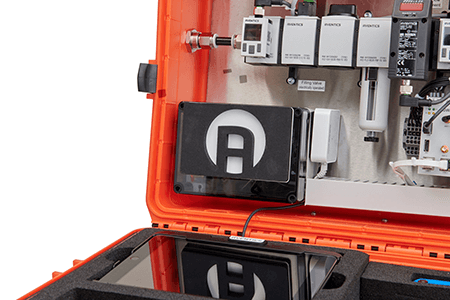CRI Report has released a report titled “Smart Pneumatics Market –Global Analysis of Market Size, Share & Trends for 2019 – 2020 and Forecasts to 2030” which is anticipated to reach USD 6.72 billion by 2030. According to a study by CRI Report, the market is anticipated to portray a CAGR of 6.19% between 2020 and 2030. According to the report, the growth of Smart Pneumatics Market is being driven by the growing awareness of predictive maintenance, the penetration of digitalization and the IoT, as well as the need for wireless infrastructure for the maintenance/monitoring of systems in systems. The penetration of digitalization and the IoT is driving the Smart Pneumatics Market for intelligent pneumatics.
The market report on Smart Pneumatics Market includes in-depth insights as:
- The estimated value of the market was USD 3.68 billion in the year 2020.
- Smart Pneumatics Market in Asia Pacific held the largest market share in the year 2020.
- Based on Type, Actuators emerged as a key segment in the Smart Pneumatics Market.
- Based on Industry, Automotive emerged as a key segment in the Smart Pneumatics Market.
- Key players are likely to focus on product innovations and expansion through mergers to retain their positions in developed markets.
“Technological innovations with enhanced capabilities and the advent of artificial intelligence and machine learning are likely to create potential demand for Smart Pneumatics during the forecast period. In addition, the need for wireless infrastructure to maintain / monitor equipment in plants is accelerating Smart Pneumatics Market growth”, according to this report
Smart pneumatics refers to a device that integrates a sensor, detection and control circuit, protection circuit, and fault self-diagnosis circuit based on original components and has a power output Pneumatics is an established technology that continues to be preferred for a variety of applications due to its inherent nature Security in hazardous applications, simplicity, and reliability; Despite all its advantages, however, the technology requires improvements in terms of energy efficiency, especially when compared to competing technologies such as hydraulics or electrics. Pneumatic systems form the most primitive and clearest class of mechanical control technology and are classified under the term “Fluid Power Control” which describes any process or device that converts, transfers, distributes, or controls energy through the use of gas or pressurized liquids.
Smart Pneumatics Market is segmented by Type into Valves, Actuators, and Modules. Actuators segment is expected to hold the largest share of the market by 2023. Smart pneumatic actuators use sensors and other electronic components to provide operational feedback (such as speed, force, travel, stroke length, and cycle time) to the controllers. The condition monitoring can use the collected data to determine whether an actuator is working as intended. and actuators, the Smart Pneumatics Market also includes modules or platforms that are used to monitor the operation and efficiency of a system. A module basically communicates with sensors in pneumatic systems through an I / O connection, allowing users to anticipate problems before they peak in the machine.
Key Players in the Market
- Some of the key players operating in the Smart Pneumatics Market are Basso Industry Corp., Bimba Manufacturing Company, Bosch Rexroth AG, Eaton, Emerson Electric Co., Festo AG & Co. KG, Ingersoll-Rand plc, Metso Corporation, Parker-Hannifin Corporation, Get Valuable Insights into Smart Pneumatics Market
In the new report, CRI Report thrives to present an unbiased analysis of the Smart Pneumatics Market that covers the historical demand data as well as the forecast figures for the period, i.e., 2021-2030. The study includes compelling insights into growth that is witnessed in the market. Smart Pneumatics Market is segmented by Element into Hardware, Software, and Services; By Type into Valves, Actuators, and Modules; By Industries into Automotive, Semiconductor, Food & Beverage, Water & Wastewater, Oil & Gas. Geographically, the market is segmented into North America, Latin America, Europe, Asia Pacific, and Middle East, and Africa.

